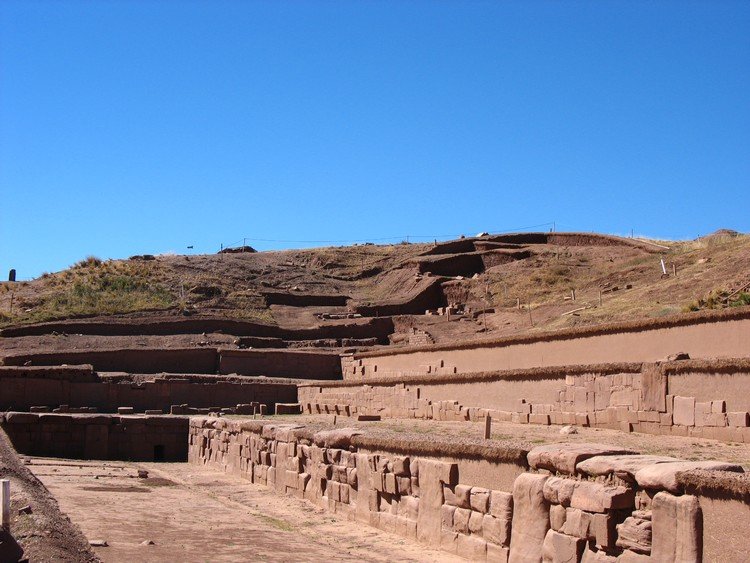Tiwanaku: The Antediluvian City
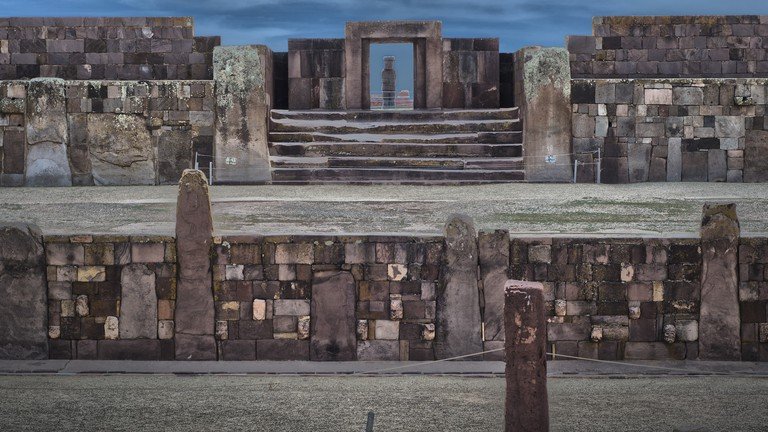
The analysis of the astronomical alignments at Tiwanaku could really be the evidence that it was built before the Younger Dryas event, making it a real “antediluvian city”.
The Tiahuanaco culture (Tiwanaku in English) was an important pre-Columbian civilization whose territory extended around the borders of the current states of Bolivia, Peru, and Chile.
The name comes from the ruins of the ancient city, near the south-eastern shore of Lake Titicaca and approximately 72 km west of La Paz.
Tiahuanaco is much larger than what has been discovered so far.
The surface remains currently cover around 4 square kilometers and include decorated ceramics, monumental structures, and megalithic blocks.
The site includes the ruins of Puma Punku, the temple Kalasasaya, home to the famous Gate of the Sun, and the Akapana Pyramid.
According to the most credited interpretations, Tiwanaku literally means “The City of God”.
Even when the Inca thrived there was nothing but ruins left of Tiwanaku, which was already a legendary city in their times. The fall of this civilization remains, in fact, one of the most intricate enigmas of pre-Columbian archaeology.
It seems like the entire city was eventually wiped off by a cataclysm of enormous power, that tore the buildings down and destroyed the megalithic temples, the streets, and the plazas, burying everything down under a thick layer of mud, somewhere reaching 21 meters of thickness, and sending back the shores of the near Titicaca Lake by 28km.
Although severely damaged, the Tiwanaku civilization most likely brought itself back in the form of a village in the area once occupied by the ancient dock, only to fall again for unexplained reasons somewhere between 1000-1100 CE.
The builders left behind megalithic monuments that go without explanation as to their mathematical design and construction. Considered by some the oldest city in the world, much of Tiwanaku’s creation defies the laws of physics and mathematics even by today’s standards.
Arthur Posnansky, the discoverer and first researcher on the site, who worked at the excavations for 40 years, firmly believed that the building of Tiwanaku was datable somewhere around 17.000/10.500 BCE.
Since we know that the Younger Dryas event triggered many floods and natural catastrophes around the world, if it was really built before this event, Tiwanaku could be a real antediluvian city.
Posnansky based these conclusions over the 40 years he excavated the remains, by carefully studying both astronomical and solstitial alignments. Specifically, he was the first to notice that the pillars and the portal of the Kalasasaya were parts of an elaborate sundial, engineered to be perfectly aligned with the position of the Sun at the equinoxes and the solstices in a period spanning between 17,000 and 10,500 BC. Those calculations, developed by Posnansky and Rolf Muller at the Potsdam Observatory, are a piece of evidence that became considered only in recent times when they were repeatedly confirmed by more advanced and accurate measures.
Recently, the director of the INAR, the Bolivian national institute of Archaeology, Oswaldo Rivera, made the news with an announcement saying that the remains of five different metropolises were found buried under Tiwanaku, at more than 21 meters in depth.
If these observations are correct, they could be the evidence to Posnansky’s measurements, meaning that Tiwanaku itself could have been built upon and around previously existing structures that only scratch the surface, dated at 17.000 BCE.
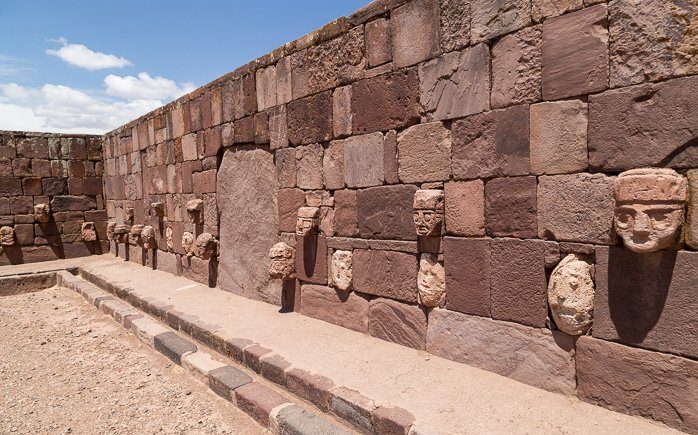
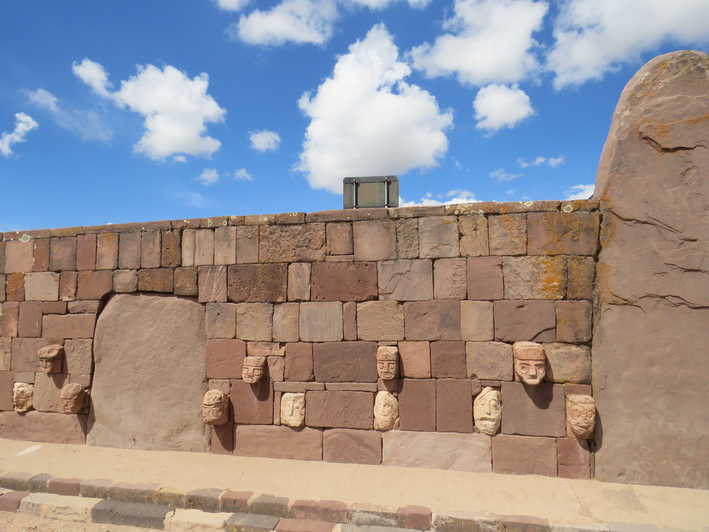
The site was first recorded in written history in 1549 by Spanish conquistador Pedro Cieza de León, who was baffled at the sight of those ruins:
“The builders of these huge foundations are unknown to us, and we don’t know how much time has passed since their time, given that today we can only catch a glimpse of these refined walls, erected centuries and centuries ago. Some of the stones are in ruin, and some are so imposing that one questions himself about how the hands of men could ever transport them to where they are. I’d dare to say that these are the oldest antiquities in all of Perù… I asked the locals if they were from the Inca times, but they, laughing at my question, told me what I already said: they were built much before the Inca kingdom. But they couldn’t make any hypothesis regarding who erected them, or why.”
The Kalasasaya Temple
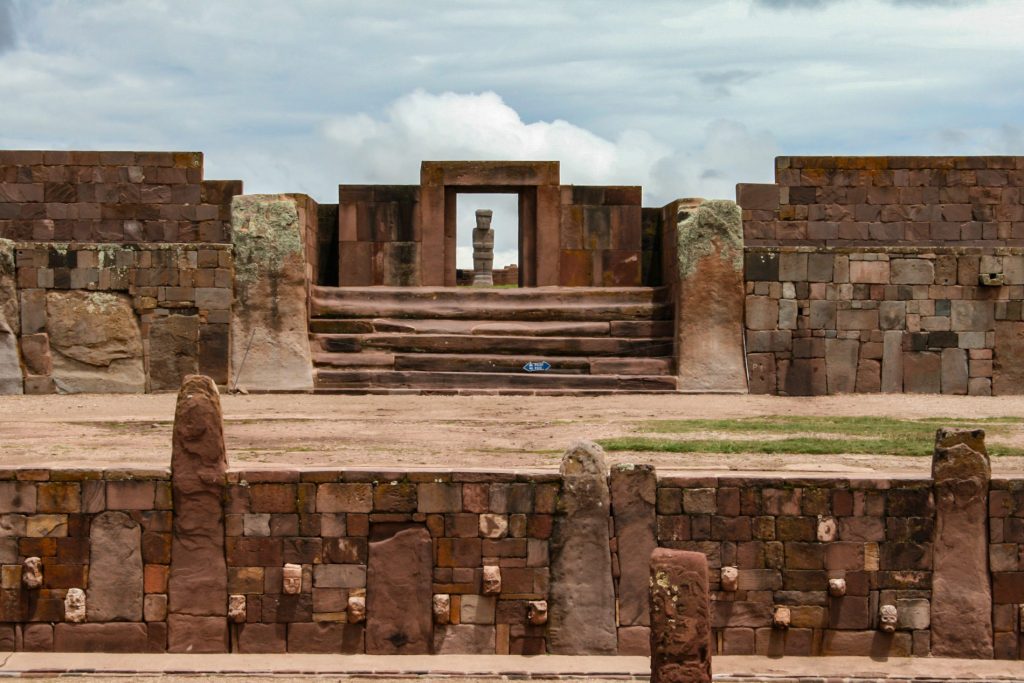
The Kalasasaya Temple is a monumental structure that measures 126 x 117 meters, with a huge entrance composed of a red sandstone trilithon. Behind the entrance lies the incredibly crafted “Ponce Monolith”, named after the name of the discoverer, which showcases an amazing level of details and workmanship, with hieroglyphic writings over the body.
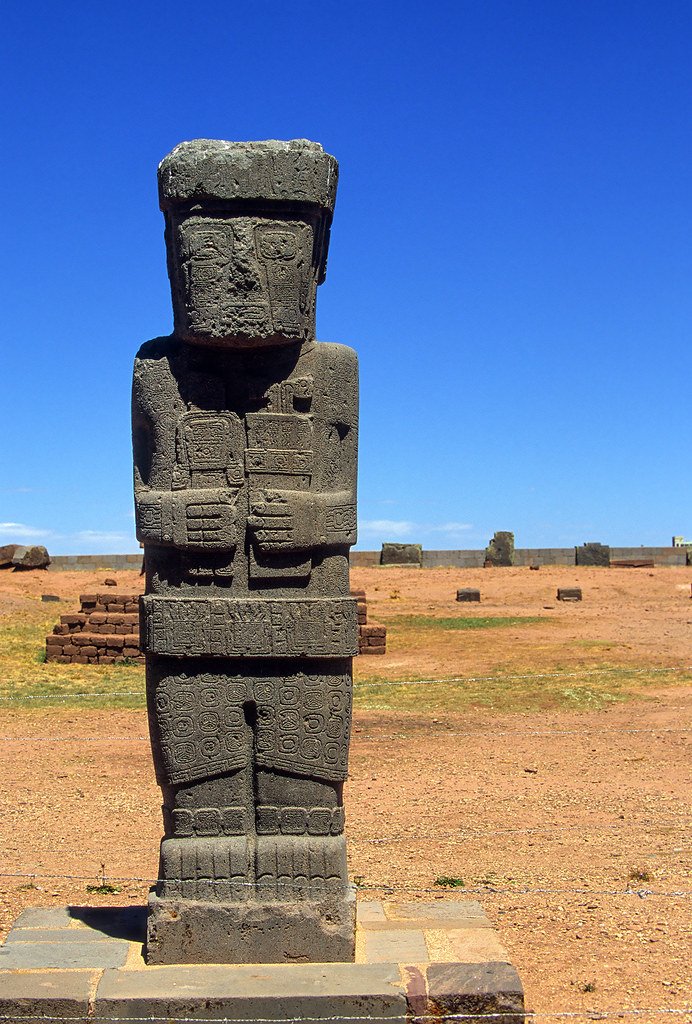
The entire area of the structure was fashioned with monolithic andesite pillars in succession, placed at the same distance. Some of them were over 7 meters high and reaching over 40 tons in weight.
Even though the pillars are pretty much eroded nowadays, some still bear the indentations used to hold the lintels.
The original appearance of the Kalasasaya Temple was completely butchered by a series of renovations and reconstructions.
The spaces between the pillars were filled with concrete blocks, and the whole foundation of the temple filled with dirt to make the Temple appear like a stocky double-stepped pyramid, leaving almost no perception of that symmetrical, elegant sequence of monolithic pillars that so much baffled the Inca, the conquistadores, and Posnansky.
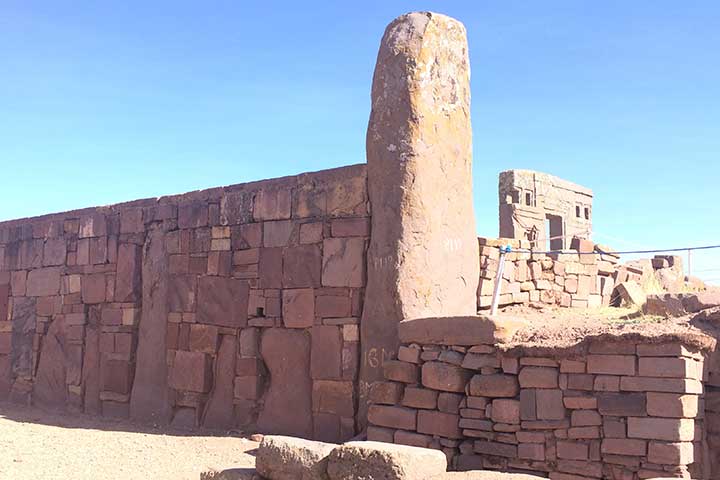
Filling the area with dirt also meant burying underground the extraordinary megalithic andesite paving unearthed by Posnansky itself, other than closing most of the original accesses.
Although located in an isolated part of the Temple, the Gate of The Sun was part of a facade that was likely made of a sequence of monolithic portals.
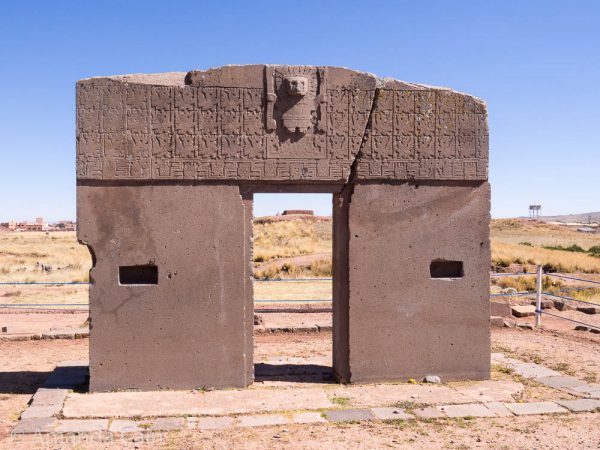
The front of the door shows an enigmatic figure at its center that most likely represents God Viracocha, bearing a staff in each hand, surrounded by winged figures, some of the human appearance, some with condor heads, each one carrying two staffs and looking towards the central figure.
During the Spring Equinox, the Sun rises perfectly above the figure of the god Viracocha.
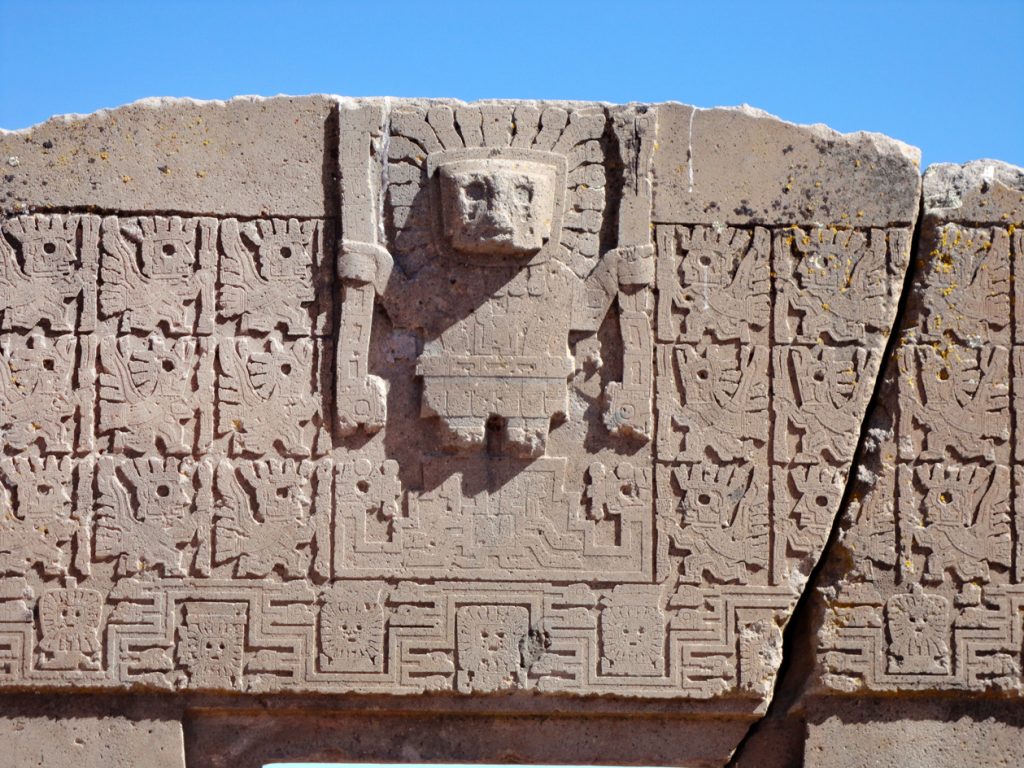
Akapana, The Antediluvian Pyramid
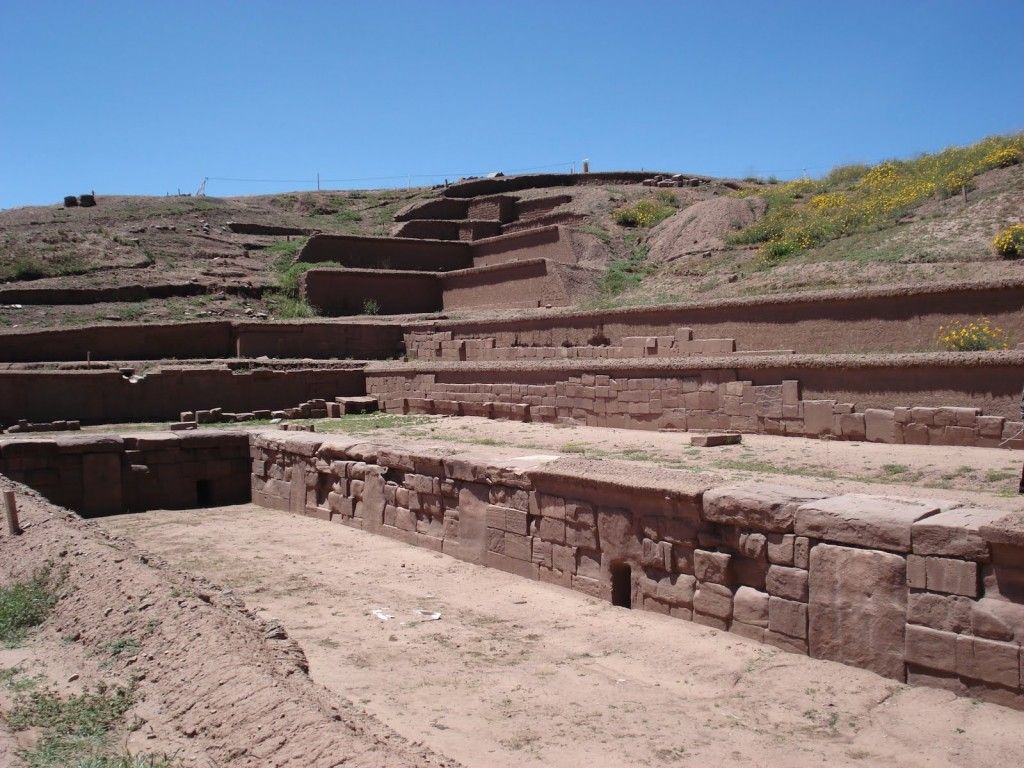
The largest terraced step pyramid of the city, the Akapana, was once believed to be a modified hill and has proven to be a massive human construction with a base 656 feet square and a height of 55.8 feet.
It is the biggest platform on the site measuring 200 meters on each side and 17 meters tall and the largest ashlars of andesite or sandstone weigh over 100 tons.
Perfectly aligned with the cardinal directions, its base is formed of beautifully cut and joined facing stone blocks.
Within the cut-stone retaining walls are six T- shaped terraces with vertical stone pillars, an architectural technique that is also used in most of the other Tiwanaku monuments.
Since the original monuments of the area were all built with the same techniques, it means that if Tiwanaku is an antediluvian city, so is the Akapana.
It originally had a covering of smooth Andesite stone, but 90% of that has disappeared due to weathering.
An intricate water conduits system and wells were found beneath and inside the pyramid, leading researchers to believe that the Tiwanaku culture was more advanced than previously thought.
